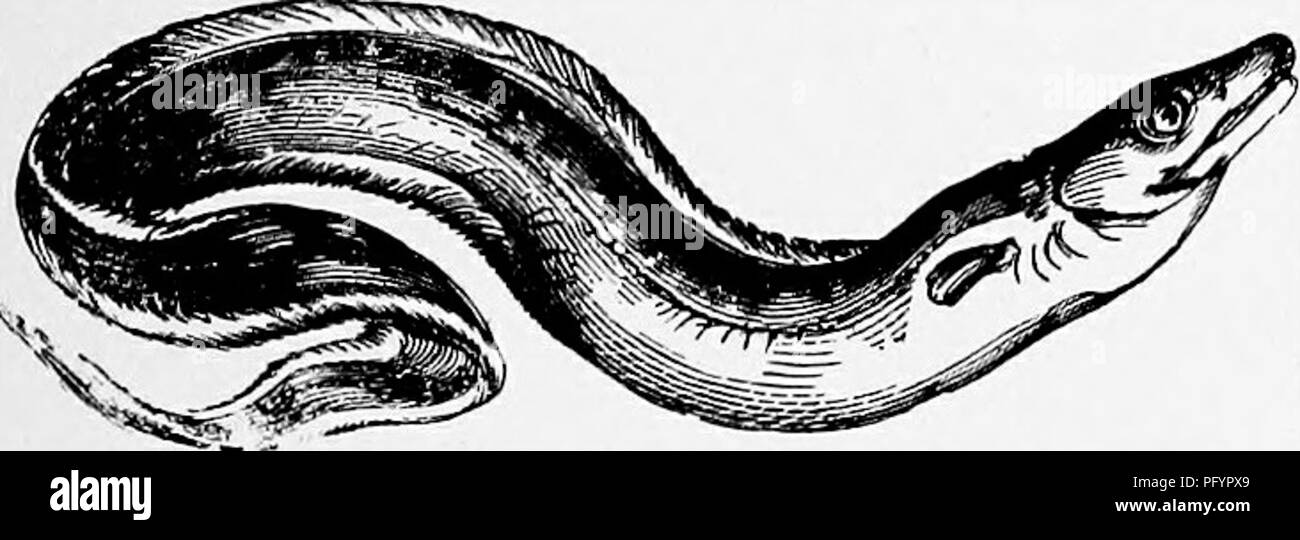. The popular natural history . Zoology. THE ELECTRIC EEL. 483. CONGER. —{Conger vulgaris!) The reproduction of the Eel has long been a subject of discussion, some Eersons thinking that the young are produced in a living state, and others olding that they are hatched from eggs. This question has, however, been set at rest by that universal revealer, the achromatic microscope, which has shown that the masses of oily-looking substance generally called fat are really the aggregated clusters of eggs, and that these objects, minute though they may be, not so large as the dot over the letter i, are

Image details
Contributor:
Central Historic Books / Alamy Stock PhotoImage ID:
PFYPX9File size:
7.1 MB (277.2 KB Compressed download)Releases:
Model - no | Property - noDo I need a release?Dimensions:
2684 x 931 px | 22.7 x 7.9 cm | 8.9 x 3.1 inches | 300dpiMore information:
This image is a public domain image, which means either that copyright has expired in the image or the copyright holder has waived their copyright. Alamy charges you a fee for access to the high resolution copy of the image.
This image could have imperfections as it’s either historical or reportage.
. The popular natural history . Zoology. THE ELECTRIC EEL. 483. CONGER. —{Conger vulgaris!) The reproduction of the Eel has long been a subject of discussion, some Eersons thinking that the young are produced in a living state, and others olding that they are hatched from eggs. This question has, however, been set at rest by that universal revealer, the achromatic microscope, which has shown that the masses of oily-looking substance generally called fat are really the aggregated clusters of eggs, and that these objects, minute though they may be, not so large as the dot over the letter i, are quite perfect, and under the microscope are seen to be genume eggs. The well-known Conger Eel is a marine species, very common in our seas, and being most usually found on the rocky portion of the coast. This useful fish has, of late years, come into more general use than formerly, and its good qualities are more appreciated. The flesh, though not very palat- able if dressed unskilfully, is now held in some estimation, and for the manufacture of soup is thought to be almost imrivalled. The fishermen can now always obtain a ready sale for the- Congers ; and those which are not purchased for the table are mostly bought up and made into isinglass. The colour of the Conger is pale brown above arid greyish white below. It often attains to a very great size, measuring ten feet in length and weighing more than 100 lbs. Ihe i-LECTRlc Eel is even more remarkable for its capability of delivering powerlul electric shocks than the torpedo, but as it is never found in the British seas it is not so well known as that fish. The Electric Eel is a native of Southern America, and inhabits the rivers of that warm and verdant country. The organs which enable it to produce sucli wonderful effects are double, and lie along the body, the one upon the other. In the native country of these fishes they are captured by an ingenious but somewhat cruel process. A number of wild horses are driven to the s